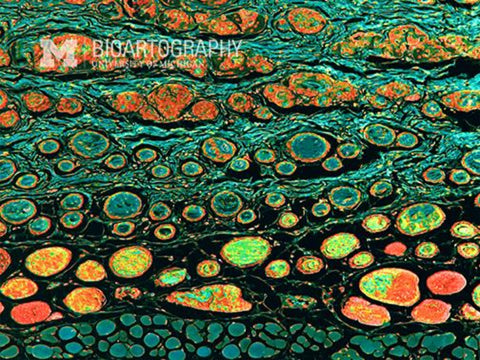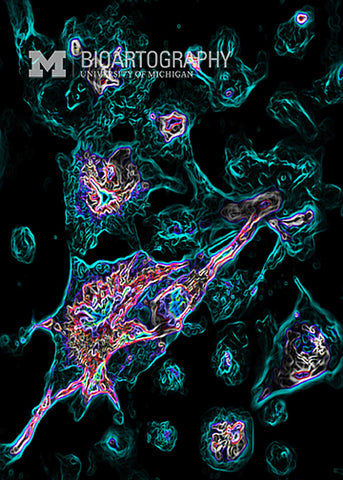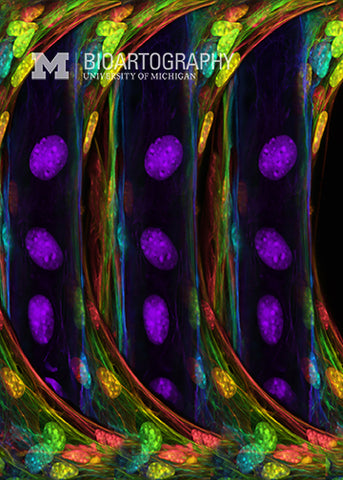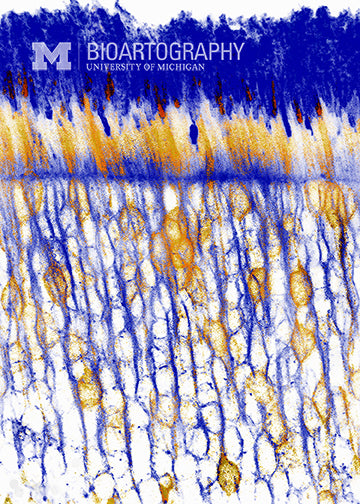
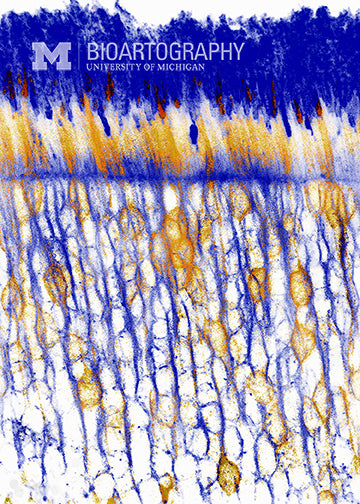
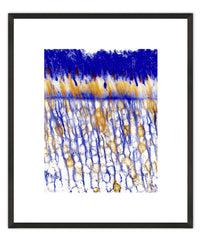
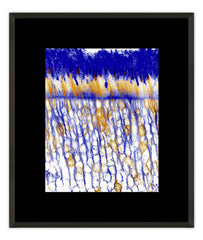
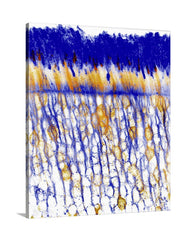
Jillian Pearring, Ph.D., Assistant Professor, Department of Ophthalmology and Visual Sciences, University of Michigan Medical School
Light that enters the eye is captured by rod and cone photoreceptor cells in the retina (located in the back inner surface of the eyeball). These cells are able to convert light into electrical information that can be interpreted by the brain. The photoreceptor cell has a light sensor that is filled with thousands of membrane layers. Like layers of paint, this arrangement increases the chance that a photon of light is absorbed by the visual pigment residing in these membranes. To maintain the health of this compartment, these membranes must undergo continuous renewal. Like a conveyor belt, new membranes are added at the bottom while old ones are removed from the top. In this image a handful of rod photoreceptors, in yellow, have been genetically activated to reveal new membrane addition, while the rest of the rod population is labeled in blue.
20-080

